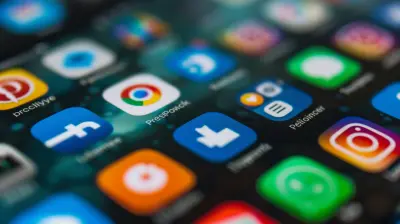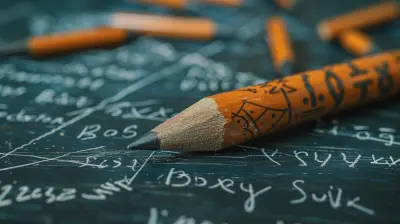Effective Communication Skills for Professional Educators
2 May 2025
Communication is the cornerstone of any successful profession, especially in education. As an educator, your ability to communicate effectively can make or break the learning experience for your students. Think about it: how can you teach a concept or manage a classroom if you struggle to convey ideas clearly?
Whether you're delivering a lecture, guiding a discussion, or providing feedback, effective communication skills are essential for fostering a positive learning environment. In this article, we'll dive into the importance of communication for educators, explore various techniques, and offer insights on how you can sharpen your communication skills to become a more impactful teacher.

Why Communication is Key for Educators
If you've ever found yourself in a classroom where the teacher's instructions were unclear or confusing, you know what a difference good communication can make. Communication isn’t just about what you say—it's how you say it, and whether the message is received as intended.Enhancing Student Understanding
Effective communication is critical to ensure that students grasp the material you're teaching. If you're explaining a complex concept in a subject like math, science, or literature, your ability to break it down into digestible pieces can help students understand without feeling overwhelmed.Think of it like building a bridge: each clear explanation is another plank that brings students closer to mastering the subject. Without those planks, there’s a gap, and students might fall into the uncertainty of not understanding the material.
Building Relationships and Trust
Open and transparent communication helps educators build strong relationships with their students. When students feel heard and understood, they are more likely to trust their teachers. This trust forms the foundation for a positive learning environment, where students feel comfortable asking questions and making mistakes—both of which are essential for deep learning.Moreover, communication isn’t just about talking; it’s also about listening. Great educators know that listening to their students’ feedback, concerns, and ideas fosters mutual respect and creates a more cohesive classroom.
Classroom Management
Classroom management is another area where communication plays a pivotal role. Clear expectations and consistent messaging help reduce misunderstandings and behavioral issues. Think of it as setting the rules for a game—if everyone knows the rules and understands why they’re in place, the game runs smoothly. But if the rules are unclear, chaos ensues.By effectively communicating your expectations and maintaining open lines of communication, you create an environment where students know what is expected of them. This minimizes confusion and maximizes productivity.
The Core Elements of Effective Communication for Educators
Now that we’ve discussed why communication is important, let’s delve into how you can become a more effective communicator in your role as an educator. Here are the key elements:1. Clarity
The first rule of effective communication is clarity. You need to express yourself in a way that’s easy for your students to understand. This means avoiding jargon and overly complex language, especially when explaining new concepts.Think about it this way: if you're trying to give directions and you use vague language like "turn somewhere around there," your listener is going to get lost. The same happens when your instructions or explanations in the classroom are unclear. Be precise and break things down step-by-step.
How to Improve Clarity:
- Use simple, straightforward language.- Break down complex concepts into smaller, manageable parts.
- Rephrase when necessary, especially if students seem confused.
2. Active Listening
Good communication is a two-way street. It’s not just about talking—it's also about listening. Active listening requires you to be fully present when your students are speaking, giving them your full attention without interrupting or preempting their thoughts.When you actively listen, you pick up on unspoken cues like body language and tone of voice, which can give you deeper insights into how your students are feeling about the lesson.
How to Practice Active Listening:
- Make eye contact and nod to show understanding.- Ask follow-up questions to encourage students to elaborate.
- Avoid interrupting or finishing students' sentences for them.
3. Non-Verbal Communication
Body language, facial expressions, and tone of voice all play a significant role in how your message is received. Non-verbal cues can either reinforce or contradict what you're saying. For instance, if you’re delivering a lecture with your arms crossed and a frown on your face, students may feel less engaged or even intimidated, even if your words are positive.How to Improve Non-Verbal Communication:
- Maintain open body language (arms uncrossed, relaxed posture).- Use facial expressions to reinforce your message (smile when appropriate).
- Be mindful of your tone of voice—avoid sounding monotone or disinterested.
4. Empathy
Empathy is the ability to understand and share the feelings of another person. In a teaching setting, this means putting yourself in your students' shoes. How might they be feeling about the material? Are they anxious, confused, or excited?When you show empathy, you create a supportive environment where students feel comfortable expressing their thoughts and concerns. This can be as simple as acknowledging that a topic is challenging and offering encouragement.
How to Show Empathy:
- Validate students' feelings by acknowledging their struggles.- Offer encouragement and positive reinforcement.
- Be patient and understanding when students are having a tough time.
5. Feedback
Constructive feedback is an essential part of the learning process. How you deliver feedback can either motivate or discourage your students. The goal is to provide feedback that is both specific and positive. Instead of simply saying, "Great job," you could say, "You did an excellent job explaining your reasoning in this math problem."Conversely, when providing criticism, focus on how students can improve rather than just pointing out what they did wrong. For example, instead of saying, "This is wrong," you might say, "This part is almost there, but here’s how you can improve."
How to Give Effective Feedback:
- Be specific and focus on the behavior, not the person.- Offer solutions or strategies for improvement.
- Mix positive feedback with constructive criticism.

Techniques to Enhance Communication Skills
If you’re looking to step up your communication game in the classroom, here are some techniques you can try:1. Storytelling
Everyone loves a good story. It’s one of the oldest and most effective ways to communicate information. As an educator, you can use storytelling to make lessons more engaging and relatable. Try weaving real-life examples or personal anecdotes into your lessons to help students connect with the material on a deeper level.2. Ask Open-Ended Questions
Open-ended questions encourage students to think critically and express their ideas. Instead of asking yes/no questions, try asking questions that require a more thoughtful response. For example, instead of asking, “Did you understand the lesson?” ask, “What part of the lesson do you feel most confident about, and what part would you like to review?”3. Use Visual Aids
Some students are visual learners, and they’ll grasp concepts better when they can see them. Use tools like diagrams, infographics, and videos to reinforce your verbal instructions. This not only enhances understanding but also keeps students engaged.4. Practice Mindful Communication
Mindful communication means being fully present in your interactions with students. This involves not just listening and responding, but also being aware of the emotional tone of the conversation. Are your students disengaged? Do they seem frustrated? Being mindful of these cues allows you to adjust your approach on the fly.5. Encourage Peer Communication
Sometimes the best learning happens when students communicate with each other. Encourage group work, discussions, and peer-to-peer teaching opportunities. This not only helps students solidify their understanding but also improves their communication skills through collaborative learning.
Overcoming Communication Barriers
Even the best communicators encounter barriers now and then. Here are some common communication obstacles educators might face and how to overcome them:1. Language Barriers
If you're teaching students who speak different languages or have varying levels of language proficiency, you may find that communication can be challenging. In this case, visual aids, simplified language, and repetition can be helpful. You might also consider learning some basic phrases in your students’ native languages, which can help bridge the gap.2. Cultural Differences
Cultural backgrounds can influence how students interpret communication. Be mindful of these differences and avoid making assumptions based on your own cultural norms. Take the time to understand your students’ backgrounds and be open to adjusting your communication style to be more inclusive.3. Emotional Barriers
Students who are stressed, anxious, or upset may struggle to focus or communicate effectively. In these cases, empathy is key. Acknowledge their feelings and offer support, whether it’s by providing extra time to complete assignments or simply being there to listen.Conclusion
Effective communication skills are a must for professional educators. Clear communication fosters understanding, builds trust, and creates a positive learning environment. Whether you're breaking down complex concepts, offering feedback, or simply listening to your students, your ability to communicate can greatly influence their success.If you want to take your teaching to the next level, start by honing these communication strategies. Practice active listening, use clear and simple language, and remember that communication is as much about empathy and understanding as it is about delivering information. The more you work on these skills, the more you’ll see your students thrive.
all images in this post were generated using AI tools
Category:
Professional DevelopmentAuthor:

Bethany Hudson
Discussion
rate this article
6 comments
Elise Allen
Clarity fosters student engagement.
May 10, 2025 at 3:24 AM

Bethany Hudson
Absolutely! Clarity in communication not only enhances understanding but also encourages active participation, making learning more effective and engaging for students.
Veda McNab
This article effectively highlights essential communication skills for educators. Clear and concise explanations, along with practical examples, make it a valuable resource for both new and experienced teachers aiming to enhance their professional interactions.
May 5, 2025 at 8:28 PM

Bethany Hudson
Thank you for your kind words! I'm glad you found the article helpful for both new and experienced educators.
Geneva Brown
Great insights! Clear communication really makes a difference in teaching. Excited to apply these tips in my classroom. Thank you!
May 5, 2025 at 10:46 AM

Bethany Hudson
Thank you for your kind words! I'm glad you found the tips helpful. Wishing you success in your teaching!
Bethany Holland
Talk less, teach more: communicate creatively!
May 4, 2025 at 4:56 AM

Bethany Hudson
Thank you for your input! Balancing communication and teaching is crucial for engaging students effectively. Creativity in communication can enhance understanding and retention.
Harley Pratt
This article underscores the critical role of effective communication in education. By emphasizing active listening, clear articulation, and non-verbal cues, it equips educators with essential strategies to foster meaningful connections and enhance student engagement in diverse learning environments.
May 2, 2025 at 9:01 PM

Bethany Hudson
Thank you for your insightful comment! I’m glad you found the article highlights on effective communication valuable for enhancing educator-student connections.
Runeveil Acevedo
Empower minds through clear communication—teach, inspire, and lead!
May 2, 2025 at 11:01 AM

Bethany Hudson
Thank you! Clear communication is indeed vital for inspiring and empowering our students. Let's continue to foster those skills!




